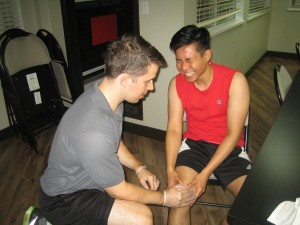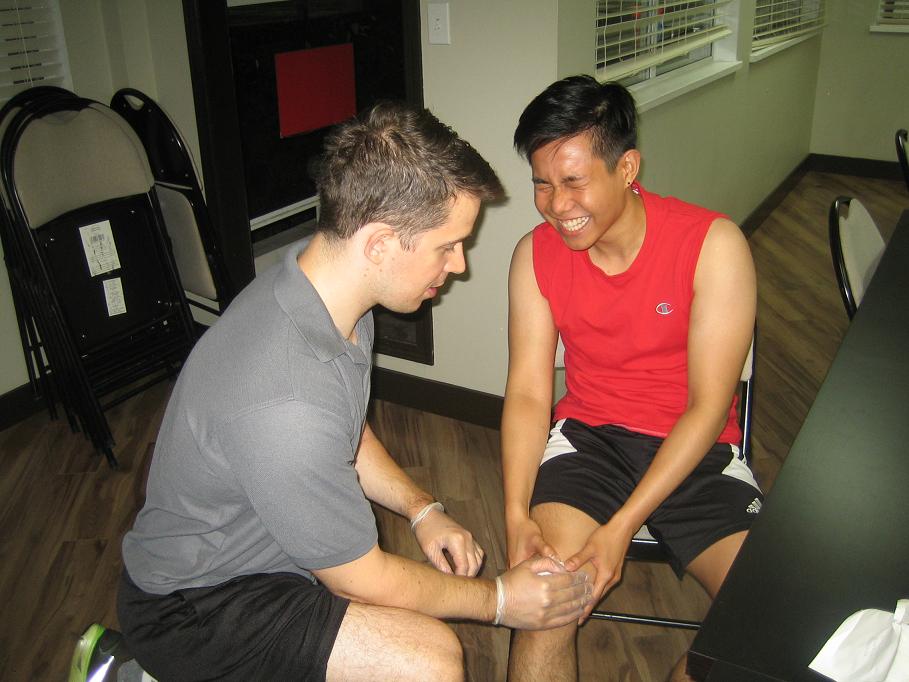
Jumper’s Knee occurs when the patellar tendon is inflamed or injured. The patellar tendon joins the kneecap (patella) to the shin bone (tibia).The patellar tendon is what enables humans to straighten the knee, along with the quadriceps.Jumper’s knee is usually a result of putting a lot of strain on the knee, caused by tissue damage or irritation to the patellar region. When the body is constantly jumping, landing or changing direction, damage to the patellar tendon can occur in the form on straining, tearing and damaging the tissues. These are common in sports such as gymnastics, basketball, volleyball, running and soccer.
Jumper’s knee is also known as patellar tendinopathy. It is different from patellar tendinitis where the tendon becomes inflamed. In patellar tendinopathy, the tendon is degenerated, rather than inflamed.
Stages of Jumper’s Knee
There are four stages in Jumper’s Knee. As the stage increases, so is the damage to the patellar tendon.
- Stage 1
- Pain is present after activity
- No functional impairment
- Stage 2
- Pain is present during and after activity
- Function is still performed although there is weakening
- Stage 3
- Prolonged pain present during and after activity
- Increasing difficulty to perform task
- Stage 4
- Pain present even during other activities
- Complete tearing of tendon
- Required surgical repair
Symptoms of Jumper’s Knee
Apart from the most common symptom which is pain either at the front or bottom area of the kneecap, several other symptoms can help determine whether one can jumper’s knee
- Increased pain when knee is pressed
- When quadriceps is contracted, pain
- Stiffness and ache after exertion
- Swelling of the affected tendon
- Calf weakness
Treatment for Jumper’s Knee
Jumper’s knee is often disregarded and therefore progresses to the next and worse stages. Each stage will have its own proper and adequate treatment.
- Stage 1
- Cryotherapy: application of ice for 20 to 30 minutes, four to six times daily, especially after activity
- Activity modification: decrease or moderate kneecap-related activities
- Strengthening: performing specific exercises
- Other joint, muscle and tendon therapies
- Stage 2
- Comprehensive physical therapy program
- Avoid strain on patellar tendon
- Continue cryotherapy
- When there is improvement on pain, do therapy for knee, ankle and hip joint
- Corticosteroid injection, if prescribed by doctor
- Stage 3
- Therapy
- Avoid activities that may strain patellar tendon
- Rest
- Stage 4
- Therapy
It is absolutely necessary to treat all cases of tendon, ligament
and muscle injuries to avoid complications that may require surgery. At onset of initial symptoms, treatment must be given right away. Always consult a physician before doing any medications. However, when the physicians are not readily available, first aid can be given to patients of bone and muscular related injuries. Through first aid training, the responder can give immediate and proper care to anyone who is in need of assistance, similar to cases of Jumper’s Knee.

